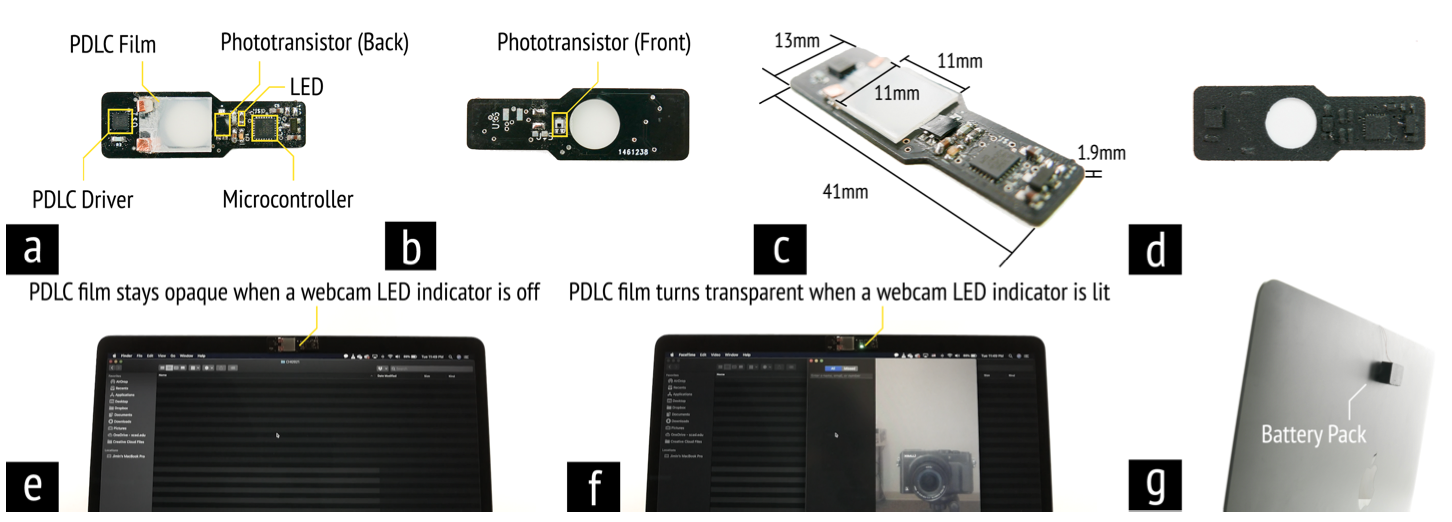Smart Webcam Cover: Designing Wrist-Mounted Affective Haptics for Communicating Cybersecurity Warnings
Laptop webcams can be covertly activated by malware and law enforcement agencies. Consequently, 59% percent of Americans manually cover their webcams to avoid being surveilled. However, manual covers are prone to human error—through a survey with 200 users, we found that 61.5% occasionally forget to re-attach their cover after using their webcam.
To address this problem, we developed Smart Webcam Cover (SWC): a thin film that covers the webcam (PDLC-overlay) by default until a user manually uncovers the webcam, and automatically covers the webcam when not in use. (See Figure 1)
Through a two-phased design iteration process, we evaluated SWC with 20 webcam cover users through a remote study with a video prototype of SWC, compared to manual operation, and discussed factors that influence users’ trust in the effectiveness of SWC and their perceptions of its utility.

Figure 1: We develop PDLC-SWC; This figure illustrates (a) front-side view; (b) backside view; and (c) the dimension of the PDLC-SWC. (d) PDLC-SWC can be coated with the LTS-400 coating spray to make the look unobtrusive from the laptop bezel when it is installed. PDLC-SWC is installed by aligning the phototransistor to a laptop’s LED indicator. The PDLC transmittance changes (e) cover and (f) uncover the webcam by sensing the LED indicator’s activation status. In this example, we opened Apple’s FaceTime application to activate a webcam and its LED indicator. (g) The current PDLC-SWC uses a 3.7V 60mAh Li-po battery for the actuation power source.
